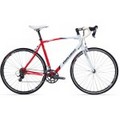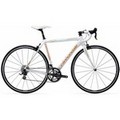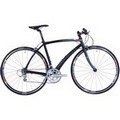Muscle soreness is a touring cyclist’s worst enemy. Yes, sore muscles hurt no matter who you are and what you’re doing, but when you feel incapacitated on tour you need to push through the pain to stay on track.
If you’re touring with a group of cyclists it’s best to avoid muscle soreness at all costs. And, if you do experience the pain, it’s important to know how to best handle it.
Minor soreness after working out is common and often impossible to avoid if you’ve pushed yourself, but you can avoid what is called delayed onset muscle soreness (DOMS).
This is that soreness that hits you a whole day or two after your workout and actually feels like you are doing damage by simply moving around.
8 Tips for Avoiding and Quickly Soothing Muscle Soreness
There are a few reasons it’s easy to be extra sore on a bike tour. Below you’ll find the ways you can successfully avoid that post-ride muscle pain while you’re on the road.
Warm Up Thoroughly
This might be a no-brainer while you’re training for your tour, but on the road you’ll be out of your normal routine. When the group leaves in the morning, you might not have had time to really get your muscles ready.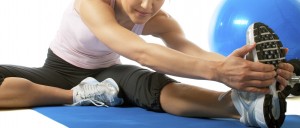
Warming up increases the flow of oxygen throughout your body, which will help your muscles work properly as you increase your intensity.
Never skip your warm up. If you’re traveling with a team of other cyclists, suggest implementing a warm up ritual every morning’s routine. Even if you need to stick to a schedule, riding slowly for five minutes before hitting your pace will help.
Cool Down Thoroughly
Similarly, cooling down should be part of your routine every single day. Once you make it a habit, you won’t be able to relax after a ride unless you’ve cooled down and given your muscles time to repair.
I have a ritual cool down routine every time I finish a bike ride. After biking more slowly for at least five minutes—or until my heart rate has returned to normal—I get off the bike and start stretching.
I don’t even have to think about my stretches anymore, my body just goes into the right positions and I hold each for 30-seconds. By sticking to the same stretches in the same order every time, your cool down will be easier to remember and you’ll avoid soreness.
Shake It Off
Studies show that vibration training is an effective way to prevent DOMS after a workout. Technically vibration training requires a high tech platform on which you stand to shake your muscles. However, you can reap the benefits without the equipment.
Whenever you get off your bike or have a chance to stretch, shake out your muscles. This type of movement likely works because it loosens some of the lactic acid that has attached to your muscles and created the soreness.
You don’t need to be technical about the way you shake your legs and arms after a ride, but doing so could help you avoid the pain later.
Take a Bath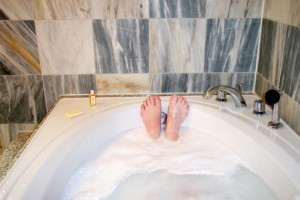
Many experts suggest taking an Epsom salt bath after a workout to prevent soreness, but I have trouble endorsing this idea because there is no real scientific evidence to back up the claim.
Trying Epsom salts in your bath can’t hurt, but to save the trouble I recommend taking a hot bath without anything in it.
The heat won’t help you heal any faster but it will give you the chance to relax and let go of the tension that could be making the soreness worse. This option is obviously only for tours that include stops at hotels.
Ice Your Muscles
As with any other type of physical swelling, ice will help. Again, the cold won’t do anything to help you heal faster, but the reduced swelling will result in temporarily reduced pain.
It will also numb your muscles temporarily. It’s not uncommon to see bikers splayed out with ice on their thighs after a rigorous day on tour, and many guided tours will have ice ready in the medic truck.
Pace Yourself and Pay Attention to Your Intensity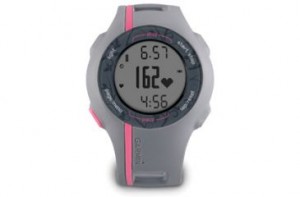
This is another reason people often get more sore than usual on a bike tour. It’s all too easy to get wrapped up in the excitement and speed of the bikers around you and you’ll lose sight of the pace you trained for.
Always keep an eye on your speed and your RPM’s while riding in a pack. If you’re not bringing gadgets, like this epic Garmin training watch![]() , to show you these things digitally, find a way during your training to self-check your intensity.
, to show you these things digitally, find a way during your training to self-check your intensity.
Maybe you can watch the second-hand and count the number of times you pedal, or you might be able to tell simply by how you feel.
Eat Right
Certain foods help prevent muscle soreness. For example, the antioxidants in dark fruits such as blueberries and blackberries prevent inflammation, which will keep your muscles from swelling. It’s a great idea to eat them before you ride. Other foods rich in antioxidants include:
- Red beans
- Cranberries
- Strawberries
- Raspberries
- Prunes
- Plums
- Red delicious apples
- Pinto beans
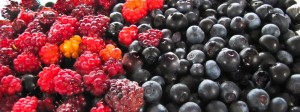
After you’ve finished biking for the day, high doses of protein will help rebuild your leg muscles and repair damage. To learn which foods are best for post-ride recovery, check out my article about refueling.
Take a Break if You Have To
All touring cyclists hate to hear it, but your soreness might require you to take a break for the day.
When you’re in pain, your body is trying to tell you something. The pain you feel in your muscles is an indication that you should rest until they’ve healed.
I’m not saying you need to stop the tour entirely when you feel a twinge of soreness, but if the pain is so bad that you’re popping ibuprofen to get through your ride then it’s best if you give your body time. Hopefully you can avoid soreness well enough that you won’t need to make the decision to stop for recovery.
Being sore on tour is not a good feeling and it can completely interfere with your schedule. Preventing it is obviously the best option, but once the soreness hits there are luckily ways to deal with it and get through it more quickly.
